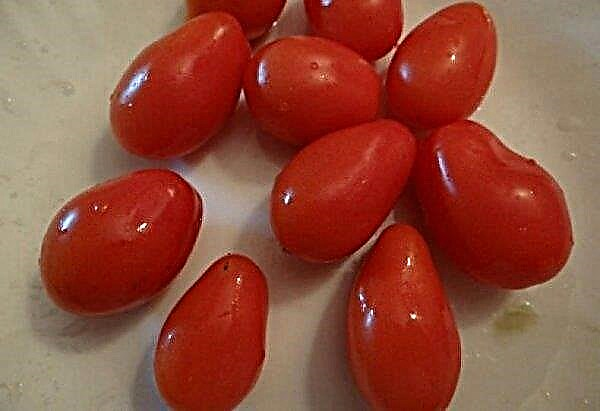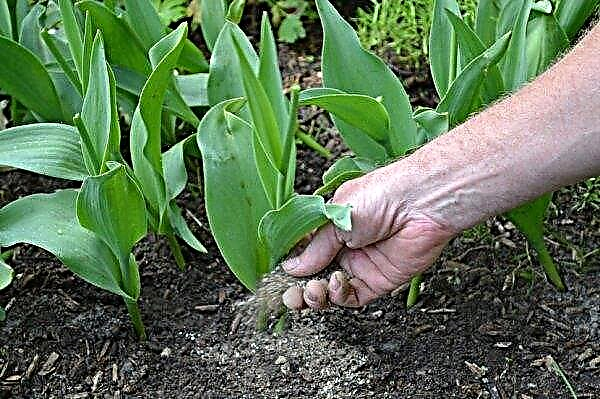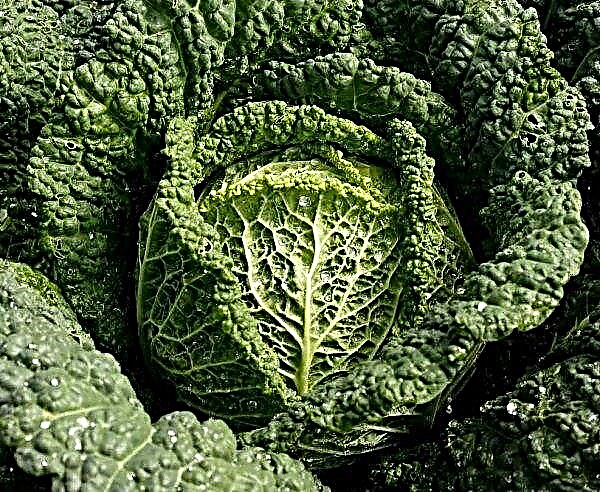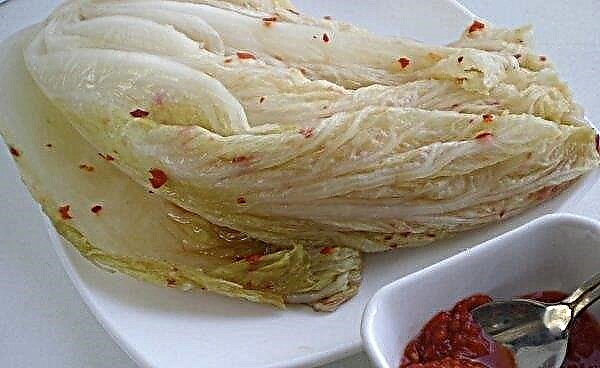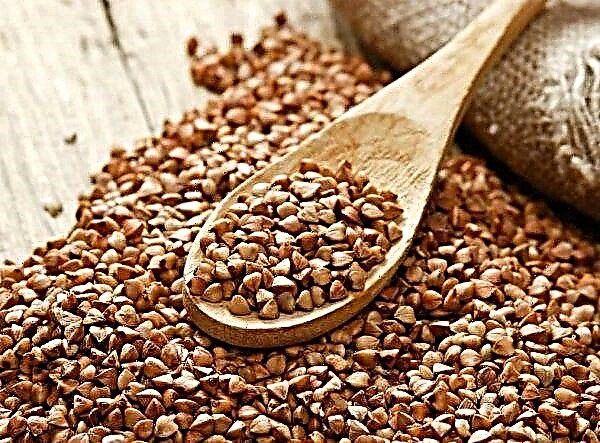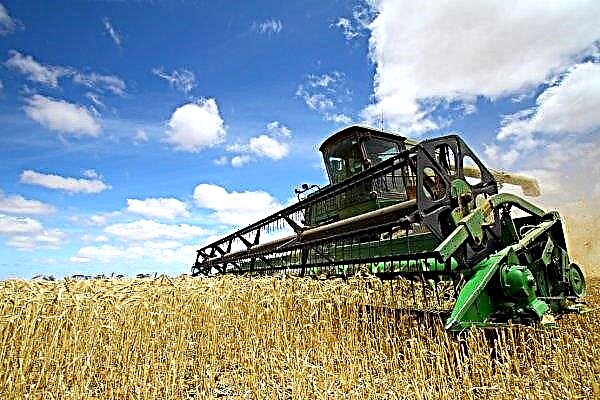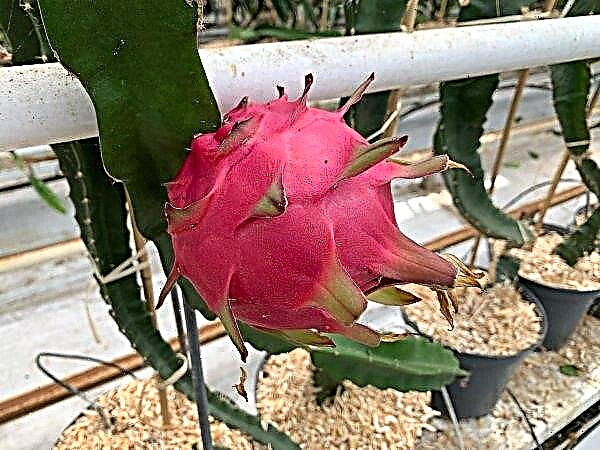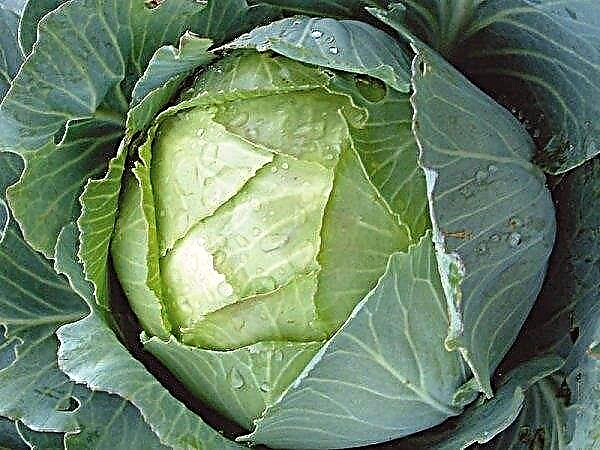Many gardeners respond positively to the potato variety Manifesto, praising its good yield. And this is far from his only advantage. Consider what the Manifesto potato variety is, learn about its pros and cons, how to plant it, grow it, what care is needed, how to collect and store it.
Description and characteristics of the variety
This is one of the many varieties bred at the Scientific and Practical Center of the National Academy of Sciences of Belarus for potato and fruit and vegetable growing and entered in the State Register of the Russian Federation (2014). It is recommended both for summer residents and for industrial breeding. It has medium-late ripening and is characterized by high productivity. On average, the yield of marketable tubers reaches 165–408 kg / ha. The highest yield was recorded near Tula and reached the mark of 458 c / ha.
Did you know? The Indians of Peru were among the first to start growing potatoes 4 thousand years ago, cultivated about 200 varieties of this vegetable.
The variety is well resistant to potato cancer, nematode, blackleg and viral diseases (virus X, Y, L). But resistance to late blight and scab is already average. Under each bush 11-15 pieces of root crops ripen. The plants themselves are medium in size or tall with green foliage, blooming with reddish-purple flowers. The leaves are medium, have a slightly noticeable waviness.
The tubers have a smooth red skin with small eyes. The flesh of potatoes of the Manifesto variety is of a light yellowish tint with excellent taste and starch content of about 13-15%. It is suitable for cooking all dishes of potatoes, suitable for both cooking and frying. The marketability of tubers is in the range from 79 to 97%, the shelf life is approximately 94–95%.
Advantages and disadvantages
- This variety has a lot of advantages:
- high yielding capacity;
- perfectly stored;
- high taste;
- universality of the use of root crops;
- presentation of tubers;
- ability to tolerate mechanical cleaning;
- excellent transportability;
- the possibility of growing in different climates;
- increased amount of antioxidants;
- resistance to many diseases.
Did you know? Potato varieties with peels and flesh of pink, reddish and violet tones contain more antioxidants that protect our body from cancer, old age and strengthen the immune system. White varieties contain more vitamin C, while yellow varieties are superior to other types in terms of carotene content.
Planting and growing potatoes
When breeding potatoes of the Manifest variety, all the rules for planting and growing this crop must be observed.
Optimal landing times
The most important signal to start potato planting is soil warming at a depth of 7–10 cm to a temperature not lower than + 8 ° С. It is advisable to focus on the local climate and weather forecast - the threat of a return of cold weather with a drop in temperature should pass.
Crop rotation rules
Potatoes should not be planted in the same place after other solanaceous ones (tomatoes, eggplant, pepper, physalis). Repeatedly it can be returned back after at least 3 years. It is best to plant it in the beds, where cereals, legumes, melons, cabbage, root crops, cucumbers and annual herbs grew earlier. After potatoes, it is optimal to plant legumes (beans, peas, beans), most cruciferous crops (radish, radishes, turnips, rutabaga, horseradish, mustard), pumpkin (zucchini and squash), onions and garlic, corn, beets, greens.
Important! Do not rush to plant tubers as early as possible and do this at the first warming. Root crops that were planted in cold soil are more susceptible to disease and sprout longer, which often significantly reduces yields.
Soil requirements
Manifesto potatoes prefer light permeable soils that are well warmed by the sun. Since this is a high-yielding variety, they must be nutritious. The best acidity of the earth is slightly acidic or neutral. It is recommended to prepare beds for this crop from the fall, digging it with organic fertilizers (manure, chicken droppings, humus). The introduction of organic matter is based on the calculation of 4-6 kg per 1 m². In the spring, it is recommended to introduce mineral fertilizers (for example, nitroammophosku) into the soil - 40 g per 1 m².
Preparing planting material
Seed potatoes begin to be prepared 20-30 days before the intended planting. First of all, it is picked and healthy non-spoiled tubers, preferably of medium size, are selected for planting. Then they are laid out in boxes in 2-3 layers and transferred to a warm room, which is illuminated by the sun. Periodically moisten a little from the sprayer. Well-sprouted specimens are planted in the ground, tubers with weak sprouts or not giving them are rejected. Before planting the tubers, you can powder with ash or make ash immediately into the holes.
Important! For clay soils that are not very suitable for potatoes, a technology for growing this crop under straw may be suitable. With it, a little potatoes are sprinkled with soil and covered with a layer straw or dried grass up to 50 cm. Before this, straw is recommended to be mixed with rotted manure or with nitrogen-containing fertilizer.
Landing technology
The potatoes of the Manifesto variety are planted 10 cm deep into the ground when planting with a distance between the planting holes of 30 cm and the row spacing of 0.7 m. The tubers are planted carefully so as not to damage the shoots. Of course, if the sprout falls off, then another will grow in its place, but its productivity will not be the same. A ridge landing is suitable for this variety, when a ridge is formed up to 12 cm above the planted tubers, and then during the next weekly hilling, the ridge height is brought to 30 cm. The yield on such beds will be noticeably higher. When planting in each well, it will be appropriate to add 1 teaspoon of nitrophoska.
Video: planting potatoes
Potato care after planting
Watering depends on weather conditions. Watering should be infrequent, but plentiful. It is especially important to carry out hydration during budding and active flowering. For the entire growing season without rain, it is enough to water 4 times. Water well by sprinkling to avoid exposing the tubers.
Important! 20 days before picking potatoes, chemicals should be discontinued.
If there is intense heat, then you must not allow the complete drying of the soil and additional irrigation should be carried out. It is also necessary to carry out the hilling of potato bushes. The first hilling is done when the sprouts grow to a length of 15–17 cm. After 14–15 days, the hilling is repeated. Regularly after rains or watering, weeding should be carried out and weed grass removed, loosening the soil.
Top dressing
For the first feeding, it is good to use rotted manure or diluted bird droppings. This is very important if fertilizers were not applied when digging or planting tubers. To do this, insist their water solution in a ratio of 1 to 15 for several days, and then after watering, about 1 liter of solution is poured under one bush. Before hilling, it is useful to fertilize with urea (1 tbsp.spoon per 10-liter bucket) or half diluted mullein (droppings). During the budding period, it will be necessary to top dress with potassium - dilute 1 tbsp in 10 l. spoon of potassium sulfate and 3 tbsp. tablespoons of ash. Before flowering, foliar top dressing, for example, from urea (300 g / 10 l), will also be useful. During flowering, it is necessary to feed phosphorus - put on 10 l 2 tbsp. tablespoons of superphosphate and a little manure (litter).
During the budding period, it will be necessary to top dress with potassium - dilute 1 tbsp in 10 l. spoon of potassium sulfate and 3 tbsp. tablespoons of ash. Before flowering, foliar top dressing, for example, from urea (300 g / 10 l), will also be useful. During flowering, it is necessary to feed phosphorus - put on 10 l 2 tbsp. tablespoons of superphosphate and a little manure (litter).
Grade Diseases and Pests
The potato variety Manifesto is resistant to a large number of diseases, but is moderately resistant to late blight, so if late blight often appears on the site and a rainy climate contributes to this, then it is worthwhile to carry out preventive treatments with Bordeaux liquid.
It may be affected by the following pests:
- Potato Moth. The most dangerous for root crops. These insects multiply rapidly and can quickly destroy a significant part of the crop, so when they appear, you must immediately take measures to combat them. The appearance of this moth is indicated by the decay of the leaves and the presence of a thin web. In order not to doubt the appearance of this pest, a bush with the indicated signs should be carefully dug up and the root crop, which will be damaged by insects, be pulled out. To combat such pests, chemical preparations “Leptocid”, “Dendrobacillin” are used.

- Colorado beetle. To eliminate such pests and their larvae that feed on the leaves of the plant, “Aktara” and “Corado” preparations are used for processing.

- Bear To combat these pests, the Medvetox chemical product is used. Granules of the drug are thrown into the wells when planting, and also scattered around the site as this pest is detected.

Pests can not damage tubers that are at a depth of 25 cm, so hilling is an excellent preventative measure. Another preventive measure is the heating of the seed material and the obligatory digging of the beds for the winter on the bayonet of a shovel.
Harvesting and storage
Root crops dig when the tops are 65–75% dry. First, it is mowed, watering is completely stopped, and after 2 weeks they begin to harvest. Dug root crops need to be sorted out. Spoiled specimens should be discarded, and tubers should be better selected for planting. The rest of the potatoes are placed in boxes (wooden or plastic) and moved to a storage room. It should be dark, dry and cool, and well ventilated. The temperature regime must be set within + 2 ... + 5 ° C.
Potatoes should be stored for no more than 6 months. Losses of root crops — about 4–6%, that is, keeping quality is quite high - about 95%. The potato Manifesto has excellent resistance to mechanical stress, therefore, it perfectly transfers transportation over long distances.
The potato variety Manifesto perfectly combines qualities such as high yield, excellent taste and nutritional value (contains many antioxidants), resistance to many diseases. To obtain high yields, a high agricultural background and timely watering is required.




